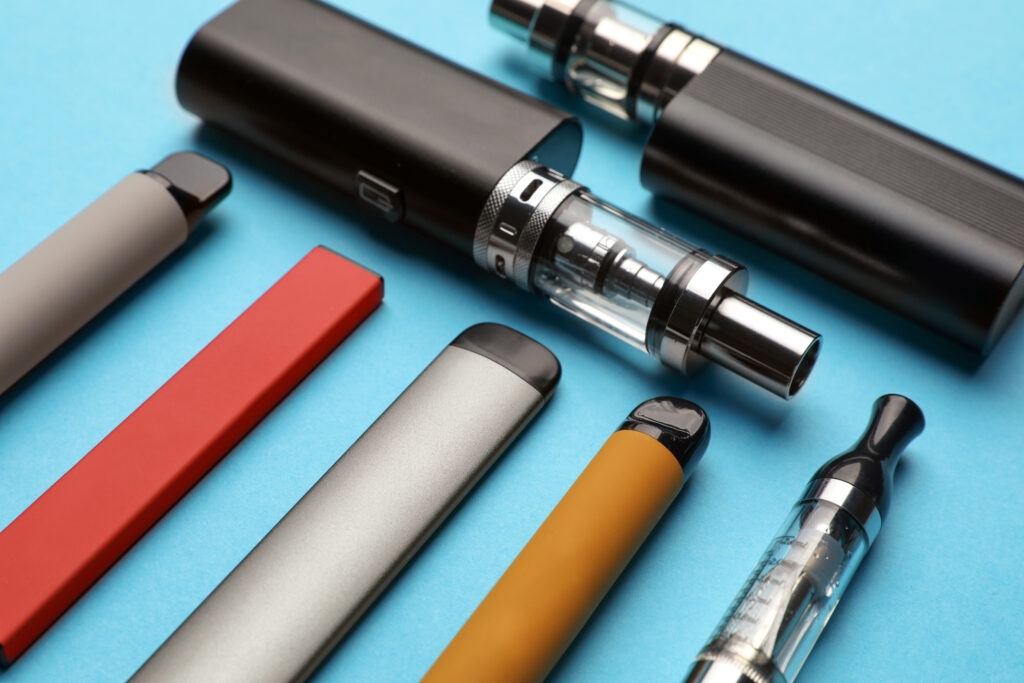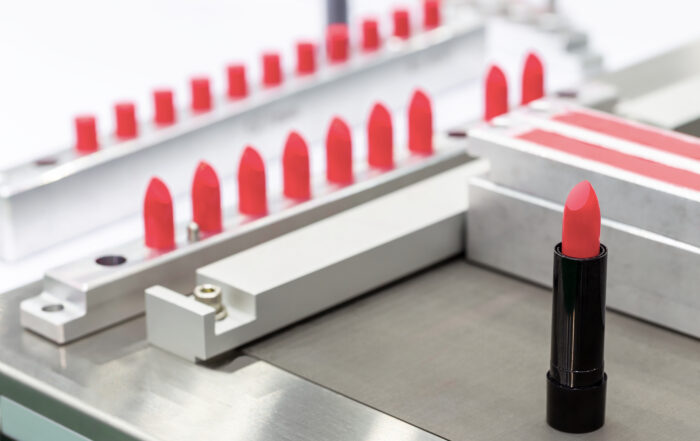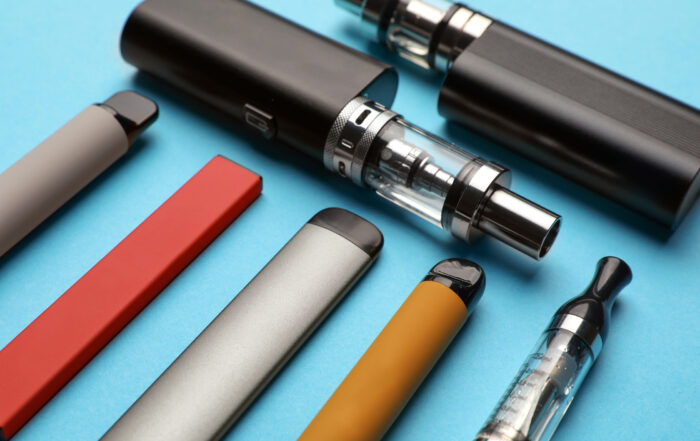
FDA Review of New Tobacco Products: A Public Health Narrative
The following is a member perspective in response to the Fall 2023 article, “Suggestions for Improvement of FDA Review of New Tobacco Products.” FDLI welcomes other written responses to this important dialogue.
In “Suggestions for Improvement of FDA Review of New Tobacco Products,” (Update, Fall 2023) Altria consultant Dave Dobbins faithfully presents the tobacco industry’s narrative about the shortcomings of the U.S. Food and Drug Administration’s (FDA’s) “premarket review” of new tobacco products. That narrative is grossly incomplete and fundamentally misleading.
It is fair to say that no informed observer can be satisfied with the way the premarket review system has functioned to date, particularly in addressing the explosion of the e-cigarette market in recent years and the resulting epidemic of e-cigarette use and addiction among young people. The introduction of new tobacco products that cause great damage to public health is precisely the harm that premarket review is intended to prevent, yet that is exactly what has occurred with the advent of e-cigarettes. That Dobbins never mentions the widespread youth usage of e-cigarettes, its adverse consequences for public health, and FDA’s failure to prevent it, is an indication that the industry’s narrative badly misstates the real problem.
The Flawed Industry Narrative
For Dobbins, the central weakness of FDA’s premarket review is that it is too tough on applicants for marketing orders. For him, that the system is fundamentally flawed is evident from the fact that premarket tobacco product applications (PMTAs) have been filed for some 26 million e-cigarette products, but marketing orders have been granted for only 23, along with a handful of orders for other tobacco products. Since, according to Dobbins, the Family Smoking Prevention and Tobacco Control Act, Pub. L. No. 111-31 (2009) (Tobacco Control Act or TCA), was intended to provide a “pathway” for new tobacco products to reach the market, the fact that so few have been authorized by FDA is itself evidence that the premarket process is flawed; in his words, “either very burdensome, poorly understood by the regulator and regulated manufacturers, or perhaps all of the above.”
As a threshold matter, this view reflects a misunderstanding of the role of premarket review under the Tobacco Control Act. The statute was not designed to provide an easy pathway to market for new products. That existed before the statute. Prior to the TCA, tobacco companies had unlimited freedom to determine what products reached the market and their characteristics, without any review to determine their impact on public health. The absence of regulation resulted in new products being introduced that were more hazardous, addictive, and appealing than those preceding them. Under the TCA, with certain exceptions, manufacturers seeking to introduce new tobacco products (i.e., those first marketed after February 15, 2007) now have the burden of demonstrating that doing so would be “appropriate for the protection of the public health” (APPH). Congress did not intend this standard to be easily met; indeed, the U.S. Court of Appeals for the Fifth Circuit has described the premarket review process set out in the TCA as “onerous, requiring manufacturers to gather significant amounts of information.”[1]
As Dobbins points out, under the TCA, whether the APPH standard is met involves an assessment of “the risks and benefits to the population as a whole, including users and nonusers of the tobacco product” and weighs the likelihood that “existing users of tobacco products will stop using such products” against the likelihood that “those who do not use tobacco products will start using such products.”[2] In Nicopure Labs, LLC v. FDA,[3] the D.C. Circuit rejected the argument that, because e-cigarettes are claimed to be “less risky” to the individual than other tobacco products, they should be subject to “less stringent authorization” through the premarket review process. “In requesting an easier path,” the court wrote, “the Industry impermissibly assumes the very public health conclusion that premarket authorization requires be substantiated before a product may be sold: that e-cigarettes are no more risky to the population as a whole than preexisting tobacco products, balancing the prospect that they may lead existing users to less harmful products or usage patterns against the risks that existing tobacco users will postpone reductions or intensify their usage and that non-users will start.”[4] Thus, the fact that few e-cigarettes have been authorized does not suggest that the premarket review process as conducted by FDA has been flawed with respect to e-cigarettes or other claimed “reduced risk” products; it may mean simply that companies are failing to meet the high standard set by Congress.
Contrary to Dobbins’ suggestion, FDA’s denial of marketing orders to virtually all e-cigarette products thus far does not constitute a “de facto ban,” but rather reflects the real world, observable public health consequences of the flavored products that have fueled the explosion of youth usage of these products. In the Technical Project Lead reviews that have accompanied the marketing denial orders (MDOs),[5] FDA has determined that because there is overwhelming evidence that flavors appeal to youth far more than tobacco-flavored e-cigarette products and are driving youth usage, companies seeking to market flavored products must produce “the strongest types of evidence” demonstrating that, compared to tobacco-flavored products, flavored products benefit smokers by helping them to stop smoking cigarettes. FDA has indicated that evidence from a randomized controlled trial, longitudinal cohort study, or similarly “reliable and robust” evidence would be required.
MDOs for millions of flavored products have been issued based on the failure of companies to produce such evidence in support of their applications for flavored products. On the other hand, marketing authorizations have been granted for certain tobacco-flavored e-cigarette products. Recently, in Lotus Vaping Technologies LLC v. FDA,[6] the Ninth Circuit joined the Second, Third, Fourth, Seventh, and D.C. Circuits in finding FDA’s approach to flavored products to be entirely within FDA’s statutory authority under the TCA and not arbitrary and capricious under the Administrative Procedure Act.[7] These courts also rejected the industry’s argument, relied on by Dobbins, that FDA committed a “surprise switcheroo” by failing to give adequate notice of the special evidentiary burden that must be borne by flavored products.[8]
Only in the Fifth Circuit do the court’s rulings indicate uncertainty as to the legality of requiring particularly compelling evidence of a smoking cessation benefit for flavored products.[9] As Dobbins points out, a Fifth Circuit panel’s ruling upholding an MDO in Wages and White Lion Investments, d/b/a Triton Distribution v. FDA (Triton)[10] has been vacated and the case is being reheard en banc. Dobbins cites the Fifth Circuit panel ruling in R.J. Reynolds v. FDA,[11] issuing a stay of an MDO for a menthol e-cigarette, but that was not a decision on the merits and the court relied on facts unique to FDA’s consideration of menthol-flavored products. In any event, the Reynolds case likely will be controlled by the en banc court’s ruling in Triton.
Although the courts have yet to write the final chapter on the FDA’s review of flavored products, and eventual Supreme Court consideration is possible, Dobbins’ characterization of the court decisions as “mixed” does not accurately reflect the near-unanimous judicial endorsement of the FDA’s application of the TCA’s APPH standard to e-cigarettes. The industry narrative repeatedly has been the basis for legal challenges to MDOs for e-cigarettes. Six federal circuits have rejected it, while only one court—the Eleventh Circuit—has vacated an MDO, and that was on procedural grounds.[12]
The Real Story
Far from creating an insurmountable barrier to the market for e-cigarettes, FDA has allowed millions of e-cigarette products, including flavored products, to remain on the market for lengthy periods of time without any marketing authorization whatsoever. This is in utter defiance of the TCA, which prohibits the marketing of new tobacco products for a single day without a marketing order. Even today, virtually the entire e-cigarette market consists of illegal products. This remarkable situation is the result of a “perfect storm” of ill-advised FDA policy decisions and delays, with the industry able to exploit those agency failures to its benefit and to the detriment of public health and, particularly, our young people.
First, FDA’s inexcusable delay in issuing the Deeming Rule subjecting e-cigarettes to its regulatory authority, including premarket review, allowed the e-cigarette market to become a “wild, wild West” of unregulated, highly addictive flavored products marketed to young people. The agency announced its intention to deem e-cigarettes within its regulatory jurisdiction in April 2011.[13] It did not issue a final rule until May 2016. In the meantime, the e-cigarette market exploded and, driven by flavored products, youth usage of e-cigarettes began to increase, from 1.5% of high school students in 2011 to 16% in 2015.[14] What should have been premarket review of e-cigarettes inevitably became postmarket review.
Second, barely one year after the Deeming Rule became final, FDA substantially deregulated e-cigarettes by issuing a Guidance purporting to suspend premarket review of e-cigarettes that were on the market as of the effective date of the Deeming Rule by extending the deadline for filing PMTAs for four years (until August 2022). In a lawsuit brought by public health groups, a federal court in Maryland rejected FDA’s claim that the Guidance was a legitimate exercise of enforcement discretion, ruling that it was beyond FDA’s statutory authority.[15] The court characterized the Guidance as giving manufacturers a “holiday from meeting the obligations of the law,”[16] noting that “manufacturers can continue to advertise and sell products that are addictive and that target a youth market . . . at a time when minors’ use of tobacco products like e-cigarettes is at an epidemic level and rising.”[17] The court also noted the industry’s intentional failure to engage the regulatory process until absolutely required to do so.[18] The court set new deadlines by which companies had to file PMTAs (September 9, 2020) and FDA had to issue marketing orders (September 9, 2021).
Third, when FDA finally began to issue MDOs for flavored e-cigarette products, companies introduced synthetic nicotine products in a wide variety of flavors in a transparent effort to evade FDA regulatory authority altogether, which under the TCA applied only to products with tobacco-derived nicotine. In March 2022, Congress acted to close this loophole, setting new deadlines for the submission of PMTAs for synthetic products (May 14, 2022) and for FDA action on those applications (July 13, 2022).[19]
Fourth, FDA has been deluged with a flood of PMTAs far in excess of what it had anticipated. The agency received applications for more than 6.5 million products by the deadline of September 9, 2020 set by the court and applications for nearly 1 million synthetic nicotine products by the May 14, 2022 deadline set by Congress.[20] It is obvious, however, that the volume of applications reflects an intentional strategy by some companies to cripple the premarket review process. For example, of the 6.5 million products for which applications were filed prior to September 9, 2020, a single company’s application accounted for more than 4.5 million products.[21] Even more revealing, of the 26 million products for which PMTAs have been filed, more than 18 million were received after the September 9, 2020 deadline.[22] Applications for synthetic products also were an abuse of the system, as FDA issued refuse-to-accept letters for more than 925,000 of the 1 million products that filed by the May 14, 2022 deadline.[23]
Fifth, there have been lengthy delays in FDA decision-making on e-cigarettes, allowing many of the products with the largest market shares to remain on the market far after the September 9, 2021 deadline set by the Maryland court. According to periodic status reports FDA is required to file with the court, FDA will not complete its review of these products until December 2023,[24] more than two years after the deadline set by the court for decisions on all e-cigarette products with applications filed by the September 9, 2020 deadline.
Sixth, FDA delayed decisions on menthol-flavored e-cigarettes, citing “unique considerations” applicable to those products,[25] even though the data showed significant youth usage of menthol e-cigarettes, particularly in the wake of increased FDA enforcement activity against other flavors.[26] More recently, FDA has begun issuing MDOs for menthol products,[27] a development that Dobbins views as evidence that the agency “doesn’t have a consistent view of what [the APPH standard] means.” Actually, these MDOs bring the agency’s decision-making on menthol in line with FDA’s consistent approach to other flavors. There never were “unique considerations” justifying special treatment for menthol products, yet major menthol e-cigarettes, like JUUL, remain on the market today, helping to feed continued high youth usage.
Seventh, FDA has yet to take any enforcement actions against products with pending PMTAs, even though they have no more legal right to be on the market than products that have never filed a PMTA. There appears to be an unstated FDA policy of exercising across-the-board enforcement discretion protecting these products, even though the Maryland court established a date (September 9, 2021) by which marketing orders must be issued for products to stay on the market without being subject to FDA enforcement.
Finally, even though the market is glutted with illegal e-cigarette products, FDA and its enforcement partner, the U.S. Department of Justice, rarely employ enforcement tools stronger than warning letters against renegade actors in the industry. The tobacco industry has shown little respect for the regulatory process, and the enforcement response has been weak[28] when measured against the dimensions of the problem.
Where to Go from Here
The central problem of premarket review is not, as Dobbins contends, that FDA has made it too difficult to get e-cigarettes to market, but that the agency has allowed so many manufacturers, particularly of flavored products, to market their products while avoiding the obligation to demonstrate, prior to reaching the market, that their e-cigarettes are “appropriate for the protection of the public health.” This regulatory “holiday” has caused, and continues to cause, great harm to public health. It must end.
Understanding the nature of the problem dictates the appropriate strategies in response:
- FDA, the Department of Justice and other federal law enforcement authorities must use their power to the fullest to take illegal e-cigarettes off the market, prioritizing flavored products—including menthol-flavored products—regardless of whether they are the subject of pending PMTAs.
- FDA must complete its review of e-cigarette products that have timely pending applications—including synthetic products—as soon as possible and, in any event, by December 31, 2023.
- Going forward, FDA must ensure that no new tobacco product reaches the market without marketing authorization and must meaningfully sanction companies that violate this fundamental statutory requirement.
In short, premarket review must finally become a reality. It must finally function to protect the public, and particularly young people, from new public health threats from tobacco products. It must be acknowledged that, through a series of serious policy blunders, FDA has failed to implement the premarket review process as the TCA intended. But the agency’s recent application of the APPH standard to flavored e-cigarettes, strongly endorsed by the federal courts against the industry’s repeated attacks, is a hopeful sign that it is righting the ship.
[1] Big Time Vapes, Inc. v. FDA, 963 F.3d 436, 439 (5th Cir. 2020).
[2] 21 U.S.C. § 387j(c)(4).
[3] 944 F.3d 267, 281 (D.C. Cir. 2019).
[4] Id.
[5] See, e.g., Technical Project Lead Review of PMTAs (Sept. 17, 2021), https://www.fda.gov/media/152504/download?attachment.
[6] 2023 WL 4384447 (9th Cir. 2023).
[7] See id. at *2 and cases cited therein.
[8] See id. at *12–13 and cases cited therein.
[9] As Dobbins notes, a divided panel of the Eleventh Circuit vacated the MDOs at issue in Bidi Vapor LLC v. FDA, 47 F.4th 1191 (11th Cir. 2022). However, that decision was based on FDA’s asserted failure to take into account the applicant’s plans for marketing and sales access restrictions for its flavored products to reduce youth usage, a failing the court described as “procedural.” The court remanded the application back to FDA for the agency to consider the proposed marketing and sales access restrictions which, as the dissent argued, is likely to result in exactly the same result, based on FDA’s prior findings that such restrictions are destined to be ineffective in preventing youth usage of flavored products. 47 F.4th at 1208–09, 1217–18 (Rosenbaum, J., dissenting). The Second, Third, Fourth, Ninth, and D.C. Circuits have found that any FDA error in failing to adequately consider proposed marketing and access restrictions was harmless and therefore not a basis to vacate the MDO. Lotus Vaping, 2023 WL 4384447, at *13–15 and cases cited therein.
[10] 41 F.4th 427 (5th Cir. 2022).
[11] 65 F.4th 182 (5th Cir. 2023).
[12] See id.
[13] Associated Press, Regulator Will Treat E-Cigarettes Like Tobacco, N.Y. Times (Apr. 25, 2011), https://www.nytimes.com/2011/04/26/business/26tobacco.html.
[14] Tushar Singh, René A. Arrazola, Catherine G. Corey, Corinne G. Husten, Linda J. Neff, David M. Homa & Brian A. King, Tobacco Use Among Middle and High School Students—United States, 2011–2015, 65 Morbidity & Mortality Wkly. Rep. 361, 363 (2016), https://www.cdc.gov/mmwr/volumes/65/wr/mm6514a1.htm.
[15] Am. Acad. of Pediatrics v. FDA (AAP), 379 F.Supp.3d 461, 492 (D. Md. 2019), appeal dismissed sub nom., In re Cigar Ass’n of Am., 812 F.App’x 128 (4th Cir. 2020).
[16] Id. at 493.
[17] Id. at 492.
[18] AAP, 399 F.Supp.3d 479, 485 (D. Md. 2019).
[19] Consolidated Appropriations Act, 2022, Pub. L. No. 117-103, div. P, tit. 1, subtit. B, § 111, 136 Stat. 49, 789–90 (2022).
[20] FDA Makes Determinations on More Than 99% of the 26 Million Tobacco Products For Which Applications Were Submitted, U.S. Food & Drug Admin. (Mar. 15, 2023), https://www.fda.gov/tobacco-products/ctp-newsroom/fda-makes-determinations-more-99-26-million-tobacco-products-which-applications-were-submitted.
[21] FDA Makes Significant Progress in Science-Based Public Health Application Review, Taking Action on Over 90% of More Than 6.5 Million ‘Deemed’ New Tobacco Products Submitted, U.S. Food & Drug Admin. (Sept. 9, 2021). https://www.fda.gov/news-events/press-announcements/fda-makes-significant-progress-science-based-public-health-application-review-taking-action-over-90.
[22] FDA Makes Determinations, supra note 20.
[23] Brian King, Looking Back, Looking Ahead: FDA’s Progress on Tobacco Product Regulation in 2022 (Jan. 31, 2023), https://www.fda.gov/tobacco-products/ctp-newsroom/looking-back-looking-ahead-fdas-progress-tobacco-product-regulation-2022.
[24] Status Report at 2, AAP, 399 F.Supp.3d 479 (D. Md. 2019) (No. 8:18-cv-883), ECF 215 (July 24, 2023).
[25] See e.g., Press Release, U.S. Food & Drug Admin., FDA Denies Marketing Applications for About 55,000 Flavored E-Cigarette Products for Failing to Provide Evidence They Appropriately Protect Public Health (Aug. 26, 2021), https://www.fda.gov/news-events/press-announcements/fda-denies-marketing-applications-about-55000-flavored-e-cigarette-products-failing-provide-evidence.
[26] Maria Cooper, Eunice Park-Lee, Chunfeng Ren, Monica Cornelius, Ahmed Jamal & Karen A. Cullen, Notes from the Field: E-Cigarette Use Among Middle and High School Students—United States, 2022, 71 Morbidity & Mortality Wkly. Rep. 1283, 1283 (2022), https://www.cdc.gov/mmwr/volumes/71/wr/mm7140a3.htm.
[27] Press Release, U.S. Food & Drug Admin., FDA Denies Marketing of Logic’s Menthol E-Cigarette Products Following Determination They Do Not Meet Public Health Standard (Oct. 26, 2022), https://www.fda.gov/news-events/press-announcements/fda-denies-marketing-logics-menthol-e-cigarette-products-following-determination-they-do-not-meet.
[28] There are recent signs that FDA tobacco enforcement may be using stronger tools against manufacturers selling unauthorized e-cigarettes. See, e.g., Press Release, U.S. Food & Drug Admin., FDA, DOJ Seek Permanent Injunctions Against Six E-cigarette Manufacturers (Oct. 18, 2022), https://www.fda.gov/news-events/press-announcements/fda-doj-seek-permanent-injunctions-against-six-e-cigarette-manufacturers; Press Release, U.S. Food & Drug Admin., FDA Files Civil Money Penalty Complaints Against Four E-Cigarette Product Manufacturers (Feb. 22, 2023), https://www.fda.gov/news-events/press-announcements/fda-files-civil-money-penalty-complaints-against-four-e-cigarette-product-manufacturers.
Update Magazine
Fall 2023

 DENNIS HENIGAN is the Vice President for Legal and Regulatory Affairs at the Campaign for Tobacco-Free Kids. Connor Fuchs of Tobacco-Free Kids assisted in the preparation of this article.
DENNIS HENIGAN is the Vice President for Legal and Regulatory Affairs at the Campaign for Tobacco-Free Kids. Connor Fuchs of Tobacco-Free Kids assisted in the preparation of this article.





